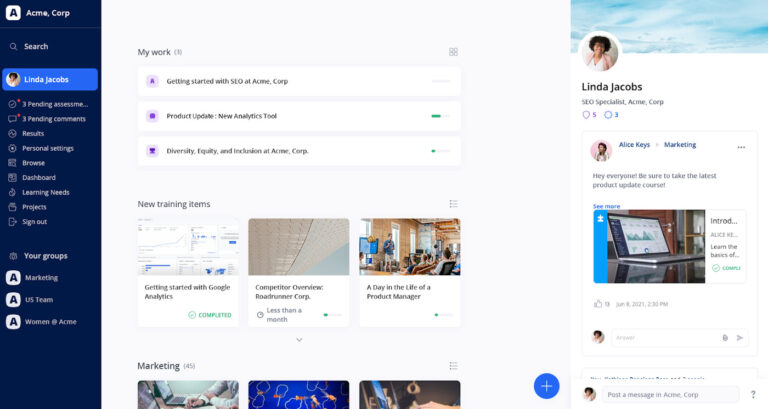Key takeaways
What is HR change management?
HR change management refers to the human resources department’s efforts to help employees transition and adapt to organizational changes. These changes can be related to business processes, structures, policies, or culture. Some HR change management activities include conducting surveys, creating training programs, and addressing employee wellness risks.
HR change management aims to minimize disruptions, maintain productivity, and keep employees motivated despite the recent adjustments.
HR’s role in change management
HR plays a vital role in change management by assessing employees’ preparedness, facilitating good communication, monitoring legal compliance, providing training, and reviewing the effects of change.
Evaluate the employees’ preparedness
Before developing a plan to communicate and implement a change, it is essential to gauge how the employees might react. Create a plan for the upcoming changes by:
Taking these steps will help introduce the change without overwhelming the team.
One way to check an organization’s receptiveness and readiness to change is to conduct surveys. Survey tools, such as SurveySparrow, can streamline this process. After collecting survey responses, SurveySparrow provides detailed analytics that you can use to make informed decisions when planning next steps. Another best is to use historical data to forecast the impact of change.

Monitor legal compliance
One of HR’s most vital roles in change management is ensuring that impending changes are in full compliance with the law. This responsibility includes verifying existing contracts and ensuring that the changes align with legal frameworks country-wise and state-wise. This involves checking employee rights, compensations, anti-discrimination policies, and health and safety standards. If there’s a threat of compliance risk, you should implement safeguards to avoid negative repercussions.
In line with this, HR must also see that everything is well-documented. Processes such as planning a change, communicating with stakeholders, and consulting legal experts should have proper documentation in case of a future audit or legal challenge.
GoCo can help streamline the documentation process by keeping all important documents in one secure and accessible location. Additionally, GoCo offers features that help HR teams keep track of compliance requirements, including labor laws, regulations, and industry standards.
Communicate impending changes
Aside from considering the readiness of the employees for a change, you should also plan how to communicate to employees, while keeping in mind the importance of maintaining transparency. Doing so will help build trust and reduce resistance. Be clear and honest, and set proper expectations.
It is also best practice to maintain communication both ways. Make sure your employees know you hear them by offering different ways to express concerns or questions. Workvivo, an employee experience tool, centralizes communication, allowing companies to easily update and share information in one location.It can also measure employee engagement and track sentiment.
Provide training
HR should provide change management training to minimize operational disruption by equipping employees with the necessary tools to adapt to the change. Anyone who is tasked with new responsibilities as a result of the change should receive some type of training — otherwise, they won’t be set up for success.
Apps like 360Learning help foster collaborative change management training. 360Learning lets you create and customize training courses to ease transitions, and its analytics and tracking features to help your team monitor progress and completion rates.

Track and review the effects of the change
Another part of HR’s role in change management is tracking the change’s effects. Monitoring the impact helps evaluate the success of the change management strategy and the efficacy of the change. This process also helps identify any areas for improvement.
Collect data you can use to gauge the impact; you can use methods like surveys, feedback forms, or interviews. With the help of the gathered data, you can adjust the change management strategy accordingly.
Change management examples
As your company evolves, your HR team should be prepared to implement changes with as little disruption as possible. Common situations that require HR change management include mergers and acquisitions, new policy roll-outs, layoffs, and leadership changes.
Implementing change management as an HR strategy
Change management strategies make sure workplace changes meet the organization’s goals and follow legal and ethical standards. Poor change management means you’ll spend more money on recruiting and onboarding new employees in the long run





